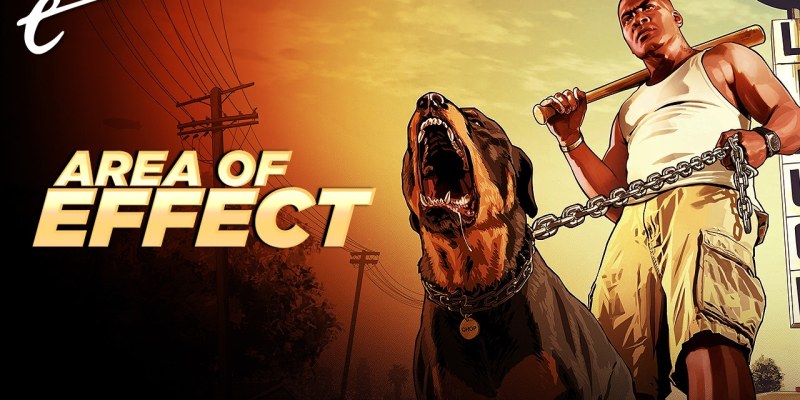The worst thing about the new-gen Grand Theft Auto V port is all the damn vampires. At least, that’s one of the conclusions you could come to after gazing into your rear mirror and seeing all the pedestrians have disappeared.
Why would you have mirrors that reflect a fuzzy, voxel-style image of the road, devoid of any people or cars? Duke Nukem 3D had working mirrors way back in 1996, after all. Well, the answer is that, when it comes to video games, mirrors are hard. Get your hands on a user-friendly level editor and, with a couple of clicks, you can turn a surface from sandstone to solid wood. But if you want to turn that same surface into a mirror, it’s surprisingly complicated, and no matter how you slice it, it’ll put extra strain on the system your game’s running on.
That’s the reason why so many titles like Grand Theft Auto V, if they feature “mirrors” at all (a lot don’t), have mirrors that are either covered in dirt or broken. If you’re making a post-apocalyptic game, you’re laughing – just blame it on whatever doom befell the rest of humanity. I know if I had a mushroom pizza’s worth of fungus growing out of my brain that I’d be punching every mirror I came across.
But why is there a performance hit? It’s because, in effect, you’re rendering part or maybe all of the same area twice, and the more complex that area is, the bigger that hit is. Duke Nukem 3D’s method involved creating an identical copy of a small room, and though it’s technically not that room you’re “seeing,” it let the Build Engine “cheat.”

As explained by Ellie Harisova, editor at game development site 80 Level, there are four methods of creating reflections. First, there are “planar reflections,” which involves creating a copy of the entire scene using a second, virtual camera. Then there are “cube maps,” which can create blurry reflective surfaces.
Next, you’ve got “screen space reflections” (SSR), which in the words of developer David Lettier “works by reflecting the screen image onto itself using only itself.” And finally, and most recently, there’s ray tracing. Developer Yuan Xie offers an in-depth technical explanation, but it simulates the path of light rays. It’s been around for a long time, but it’s only relatively recently that PCs and consoles have the power to render it in real time. Ray tracing, which is used for more than mirrors and reflections, has been touted as the way forward, though it’s still resource-hungry.
“But hang on,” you might be thinking, “I’ve played Forza Horizon 3 and it has reflective wing and rear-view mirrors!” Yes, it does. However, you’ll notice an awful lot of pop-up as the scenery materializes. If you’re quickly glancing at the mirrors, you might not notice, but when you do it becomes a little distracting.
Hitman 3, while not a driving game, has issues with its mirrors. Walk into a bathroom in the legacy Paris level and you can see Agent 47 and his potential victim perfectly reflected in the mirror. However, step into the makeup area, which has rows upon rows of mirrors and several visible at once, and the reflections are much more pixelated.

Admittedly, I haven’t been present at any Grand Theft Auto V design meetings, but the issue with its mirrors almost certainly boils down to complexity. The more things a mirror is reflecting and the bigger the area, the more of a performance hit your game will take.
In Forza Horizon 5, for example, there are relatively few vehicles on the road and absolutely no pedestrians. Meanwhile, that Hitman bathroom with the crystal-clear mirror might have two, maybe three NPCs wandering into it, and the area you’re reflecting is relatively small.
Grand Theft Auto V, however, is a whole different story. For GTAV’s first-person mirrors to, er, mirror what was out there flawlessly, they’d have to reflect the geometry of the open city behind you (or at least a sizable chunk of it), every car behind you, and every pedestrian walking along the pavement.
That’s assuming you were driving normally in traffic, obeying the traffic lights. If, however, you started smashing through cars, it’d have to deal with cars hitting other cars and pedestrians fleeing, so the frame rate would drop like a stone.
Until mirrors require next to no horsepower if that day ever comes, developers need to ask themselves if a game actually gains anything from having them. Duke Nukem 3D’s mirrors were, for the most part, cosmetic. Yes, they were cool and a feather in 3D Realms’ cap, but the game would have been just as good without them.

Hitman, on the other hand, made good use of its mirrors from Hitman 2 onwards. They were initially cosmetic, but then developer IO Interactive made it so that NPCs registered your reflection. Suddenly, dispatching someone in a secluded bathroom got a lot harder.
Grand Theft Auto V would be more immersive with working wing and rear mirrors; there’s no doubt about that. But would omitting them entirely ruin the game? No. They have value, but given the choice of having working mirrors or hitting 60 FPS and switching to the external camera every now and then, I’d choose the latter.
The real problem with Grand Theft Auto V’s mirrors is that Rockstar has adopted this strange half-measure. The image you see in your mirrors is so blurry you can barely make the road out. And since you can’t see a car even if it’s right behind you, it serves no useful purpose, nor is it in any way immersive. In fact, if anything, peeking into your mirror is likely to pull you out of the game.
So, yes, it’s disappointing that Grand Theft Auto V is missing mirrors, but it’s not the end of the world. It is, however, a big design blunder to inflict those eye-bleedingly bad, reality-warping mirrors on players, with no option to turn it off.
Clearly, it’s now down to Rockstar to make amends by giving us a Red Dead Redemption: Undead Nightmare-style expansion where Trevor, Michael, and Franklin take on the bloodsucking undead. Grand Theft Auto Vampire, anyone?
